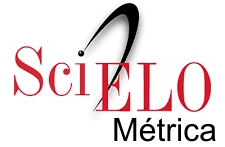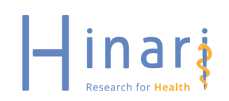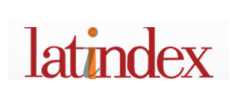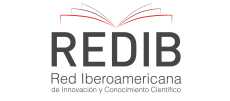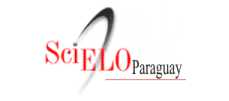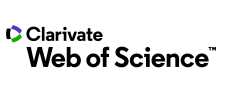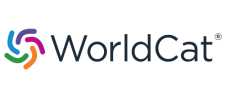Ictus en adultos jóvenes en un hospital referencia de Paraguay
Resumen
Introducción: a nivel mundial, existe un aumento en la prevalencia del ictus en adultos jóvenes, donde cerca del 10 al 20% de los ictus isquémicos se presentan en personas con edades comprendidas entre 18 a 50 años.
Objetivo: determinar las características clínicas de pacientes adultos jóvenes hospitalizados por ictus en el Centro Médico Nacional, Hospital Nacional, Itauguá, Paraguay, en el año 2023.
Metodología: estudio observacional, descriptivo transversal, con muestreo de casos consecutivos. Se incluyeron a pacientes con edades de 15 a 55 años, hospitalizados por ictus isquémico y hemorrágico.
Resultados: se incluyeron 112 pacientes, con edad 45,6±8,1 años; el 52,7% eran mujeres. El 90,2% presentó al menos una comorbilidad, donde la hipertensión arterial se encontró en el 82,1%. El ictus hemorrágico se presentó en 66,1%. El tiempo medio de hospitalización fue 23,3±19,1 días, con una mortalidad del 9,8%. El análisis bivariado mostró asociación del ictus isquémico con el sexo masculino (OR 2,2; p 0,045), el antecedente de ictus (OR 5,4; p 0,043), la diabetes (OR 2,7; p 0,018) e insuficiencia cardíaca (OR 19,4; p 0,012). Los pacientes que fallecieron tuvieron un tiempo de hospitalización significativamente menor que quienes fueron dados de alta (4,7 ± 4,6 días vs. 25,3 ± 18,9 días; p < 0,001).
Conclusión: predominó el sexo femenino y la hipertensión arterial fue la comorbilidad más prevalente. Más de la mitad presentaron múltiples comorbilidades y se determinó una mortalidad global del 9,8%. El ictus hemorrágico fue el tipo más frecuente. El sexo masculino, el antecedente de ictus y la insuficiencia cardíaca fueron factores de riesgo para ictus isquémico. Además, los pacientes fallecidos presentaron un tiempo de hospitalización significativamente menor. Estos hallazgos subrayan la relevancia del control de los factores de riesgo cardiovasculares en poblaciones jóvenes.
Citas
2. Lalama-Vallejo SE, Guarate-Coronado YC. Efectividad del Código Ictus en el Servicio de Emergencia. Experiencia de un Centro. MQR Investigar [Internet]. 2023 [citado 16 Dic 2024];7(3): 1131–50. Disponible en: https://doi.org/10.56048/MQR20225.7.3.2023.1131-1150
3. Feigin VL, Stark BA, Johnson CO, Roth GA, Bisignano C, Abady GG, et al. Global, regional, and national burden of stroke and its risk factors, 1990-2019: A systematic analysis for the Global Burden of Disease Study 2019. Lancet Neurol [Internet]. 2021 [cited 2024 Dec 16]; 20(10): 795–820. Available from: https://pubmed.ncbi.nlm.nih.gov/34487721
4. Ferro JM, Massaro AR, Mas JL. Aetiological diagnosis of ischaemic stroke in young adults. Lancet. Neurol [Internet]. 2010 [cited 2024 Dec 16];9(11): 1085–96. Available from: https://pubmed.ncbi.nlm.nih.gov/20965437 Subscription required
5. Yeo LLL, Chen VHE, Leow AST, Meyer L, Fiehler J, Tu TM, et al. Outcomes in young adults with acute ischemic stroke undergoing endovascular thrombectomy: A real-world multicenter experience. Eur J Neurol [Internet]. 2021 [cited 2024 Dec 16];28(8): 2736–44. Available from: https://pubmed.ncbi.nlm.nih.gov/33960072 Subscription required
6. Boot E, Ekker MS, Putaala J, Kittner S, De Leeuw FE, Tuladhar AM. Ischaemic stroke in young adults: a global perspective. J Neurol Neurosurg Psychiatry [Internet]. 2020 [cited 2024 Dec 16]; 91(4): 411–7. Available from: https://pubmed.ncbi.nlm.nih.gov/32015089
7. Bonardo P, León Cejas L, Mazziotti J, Zinnerman A, Fernández Pardal M, Martínez A, et al. AISYF: first national, prospective, multicenter study of young patients with stroke in Argentina. Medicina (B Aires) [Internet]. 2021 [cited 2025 Feb 16]; 81: 588–96. Available from: https://pubmed.ncbi.nlm.nih.gov/34453801
8. Matuja SS, Munseri P, Khanbhai K. The burden and outcomes of stroke in young aduts at a tertiary hospital in Tanzania: a comparison with older adults. BMC Neurol [Internet]. 2020 [cited 2025 Feb 16];20(1):206. Available from: https://pmc.ncbi.nlm.nih.gov/articles/PMC7247244
9. Aslam A, Khan U, Niazi F, Anwar I. Etiology and risk factors of stroke in young adults: A multicentric study. Ann Med Surg (Lond) [Internet]. 2022 [cited 2025 Feb 16];82 :104647. Available from: https://pmc.ncbi.nlm.nih.gov/articles/PMC9577644
10. Bardugo A, Fishman B, Libruder C, Tanne D, Ram A, Hershkovitz Y, et al. Body mass index in 1.9 million adolescents and stroke in young adulthood. Stroke [Internet]. 2021[cited 2024 Dec 16];52(6): 2043–52. Available from: https://pubmed.ncbi.nlm.nih.gov/33980044
11. Bonardo P, Bandeo L, Bustos A, Garbugino S, Fernández Pardal MM, Reisin R. Enfermedad cerebrovascular en el paciente adulto joven. RAM [Internet]. 2022;10(3):183 Available from:
https://revistasam.com.ar/index.php/RAM/article/view/753
12. Moussa R, Harb A, Menassa L, Risk T, Nohra G, Samaha E, et al. [Etiologic spectrum of intracerebral hemorrhage in young patients]. Neurochirurgie [Internet]. 2006 [cited 2024 Dec 16];52(2-3 Pt 1):105–9. Available from: https://pubmed.ncbi.nlm.nih.gov/16840969 Subscription required
13. Ministerio de Salud Pública y Bienestar Social, Dirección General de Vigilancia de la Salud, Dirección de Enfermedades no Transmisibles. Guía de práctica clínica de las enfermedades cardiocerebrovasculares [Internet]. Asunción: Ministerio de Salud Pública y Bienestar Social; 2023. [citado 16 Dic 2024]. Disponible en: https://dvent.mspbs.gov.py/wp-content/uploads/2023/11/Guia-de-Practica-Clinica-de-las-Enfermedades-Cardiocerebrovasculares.pdf
14. Arboix A, Massons J, García-Eroles L, Oliveres M. Ictus en adultos jóvenes: rasgos clínicos y frecuencia de presentación en 280 pacientes según el subtipo etiológico. Med Clín [Internet]. 2016 [citado 16 Feb 2024];146(5): 207–11. Disponible en: https://doi.org/10.1016/j.medcli.2015.10.032 Se requiere suscripción
15.Tejada Meza H, Artal Roy J, Pérez Lázaro C, Bestué Cardiel M, Alberti González O, Tejero Juste C, et al. Epidemiology and characteristics of ischaemic stroke in young adults in Aragon. Neurología (English Edition) [Internet]. 2022 [cited 2025 Feb 16];37(6): 434–40. Available from: https://doi.org/10.1016/j.nrleng.2019.05.009
16.George MG. Risk factors for ischemic stroke in younger adults: A focused update. Stroke [Internet]. 2020 [cited 2024 Dec 16];51(3): 729–35. Available from: https://pubmed.ncbi.nlm.nih.gov/32078487
17. González-Gómez FJ, Pérez-Torre P, DeFelipe A, Vera R, Matute C, Cruz-Culebras A, Álvarez-Velasco R, Masjuan J. Stroke in young adults: Incidence rate, risk factors, treatment and prognosis. Rev Clin Esp (Barc) [Internet]. 2016 [cited 2024 Dec 16];216(7):345-51. Available from: https://pubmed.ncbi.nlm.nih.gov/27297118 Subscription required
18. Arana-Morales G, Medina-Palomino F. Frecuencia de hipertensión arterial resistente en pacientes atendidos en establecimientos de una red asistencial en Perú. Rev Colomb Cardiol. [Internet]. 2024 [citado 16 Dic 2024];31(1): 31–8. Disponible en: https://www.rccardiologia.com/frame_esp.php?id=348
19. Su M, Pan D, Zhao Y, Chen Ch, Wang X, Lu W, et al. The direct and indirect effects of length of hospital stay on the costs of inpatients with stroke in Ningxia, China, between 2015 and 2020: A retrospective study using quantile regression and structural equation models. Front Public Health [Internet]. 2022 [cited 2025 Feb 16];10: 881273. Available from: https://pubmed.ncbi.nlm.nih.gov/36033765



